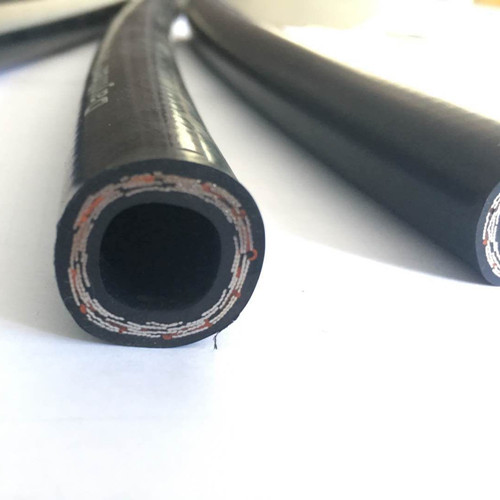335345435
Nov . 11, 2024 16:57 Back to list
hydraulichoses
Understanding Hydraulic Hoses Their Importance and Applications
Hydraulic hoses are essential components in a wide array of industries, playing a pivotal role in the functioning of hydraulic systems. These hoses facilitate the transfer of hydraulic fluid, which is vital for powering various machinery and equipment. Whether in construction, agriculture, manufacturing, or automotive applications, hydraulic hoses ensure that systems operate smoothly and effectively. This article delves into the importance, types, applications, and maintenance of hydraulic hoses.
What are Hydraulic Hoses?
Hydraulic hoses are flexible tubes designed to transmit hydraulic fluid under high pressure. They consist of three primary components the inner tube, the reinforcement layer, and the outer cover. The inner tube is typically made from synthetic rubber or thermoplastic, capable of resisting the high pressures and corrosive fluids often encountered in hydraulic applications. The reinforcement layer is constructed from materials such as steel wire, which provides strength and flexibility, helping the hose to withstand pressure without collapsing. Finally, the outer cover protects against external factors such as abrasion, chemicals, and environmental conditions.
Importance of Hydraulic Hoses
The significance of hydraulic hoses cannot be overstated. In hydraulic systems, fluid power is generated by converting mechanical energy into hydraulic energy, which is then utilized to perform work. Hydraulic hoses are integral to this process, as they ensure the efficient transport of pressurized fluid from one component to another. A reliable hydraulic hose can enhance the performance and safety of equipment, reduce downtime, and improve overall operational efficiency.
Types of Hydraulic Hoses
There are several types of hydraulic hoses, each designed to meet specific application requirements
1. Low-Pressure Hoses These hoses are suitable for applications with lower pressure requirements and are often used in return lines.
2. Medium-Pressure Hoses These hoses are designed for moderate pressure applications, often found in construction and agricultural equipment.
hydraulichoses

3. High-Pressure Hoses These hoses are engineered to withstand very high pressures and are commonly used in industrial machinery.
4. Thermoplastic Hoses Known for their lightweight and flexibility, these hoses are ideal for mobile equipment and applications where space is limited.
5. Wire Braided Hoses These hoses feature wire braiding for added strength and durability, making them suitable for high-pressure applications.
Applications of Hydraulic Hoses
Hydraulic hoses are ubiquitous across various sectors. In construction, they are used to power excavators, bulldozers, and cranes, enabling them to lift heavy loads and perform various tasks. In agriculture, hydraulic hoses facilitate the operation of tractors, harvesters, and other machinery, allowing for efficient farming practices. The automotive industry relies on hydraulic hoses for braking systems, steering, and other critical operations. Furthermore, manufacturers utilize hydraulic hoses in production lines for machinery that requires fluid power.
Maintenance of Hydraulic Hoses
Proper maintenance of hydraulic hoses is crucial to ensure their longevity and optimal performance. Regular inspections for wear, cracks, or leaks can prevent costly repairs and equipment downtime. Keeping hoses clean and free from contaminants is essential, as dirt and debris can compromise the integrity of the hose and the hydraulic system. Additionally, ensuring proper routing and support of hoses can prevent kinking and abrasion, further enhancing their lifespan.
Conclusion
In conclusion, hydraulic hoses are vital components that play a crucial role in various industries. Their ability to efficiently transmit hydraulic fluid under pressure makes them indispensable for the proper functioning of hydraulic systems. Understanding the types, applications, and maintenance of hydraulic hoses is essential for ensuring safety and efficiency in any operation that relies on fluid power. By choosing the right hose and maintaining it properly, businesses can achieve optimal performance and reduced operational costs.
-
SAE 100 R17 Black Smooth Cover Hydraulic Hose
NewsMar.07,2025
-
SAE 100 R17 Black Smooth Cover Hydraulic Hose
NewsMar.07,2025
-
SAE 100 R17 Black Smooth Cover Hydraulic Hose
NewsMar.07,2025
-
SAE 100 R17 Black Smooth Cover Hydraulic Hose
NewsMar.07,2025
-
SAE 100 R17 Black Smooth Cover Hydraulic Hose
NewsMar.07,2025
-
steel wire braided hydraulic hose
NewsMar.07,2025



